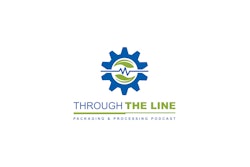Workforce challenges in manufacturing have dominated the “things that keep me awake at night” landscape for some time now. It’s been discussed in the guise of quiet quitting, the great resignation, the generational divide, the employee lifecycle, employee engagement, work/life balance, and on and on. However it’s referenced, we have repeatedly heard from consumer packaged goods (CPG) companies that they cannot recruit and retain employees, thus leaving them short-staffed, especially at the shop floor level.
The effects of this situation are numerous and detrimental, including lower quality or safety results as people feel rushed or overworked, limited production because a line can’t be staffed, and the absorption of resources in hiring and training that are normally committed to productivity improvements, etc. Everyone knows that there are costs associated with these detrimental effects, but just how much is frequently a guess or a gut feeling. Now you can put a finer point on the total cost of turnover using the soon-to-be-released Turnover Cost Calculator by the FSO Institute. For each position, the Turnover Cost Calculator looks at:
- Total productivity loss costs
- Total new hire training costs
- Total cost to “cover” position
- Total cost of turnover per employee
- Separation cost and cost to hire replacement
Using your own company numbers, you can calculate your annual employee turnover, cost per employee, and total annual turnover costs. Correspondingly, by reducing your turnover number, you can calculate the savings and the opportunity cost savings. Finally, you can calculate a turnover reduction ROI focused on percent reduction in turnover, employees retained, and total savings.
To help show the value of the turnover cost tool, we have asked FSO coaches James Couch (former director of equipment and process engineering for Smithfield Foods) and Mark Cacciatore (former senior vice president of supply chain operations for Conagra Brands) to provide some additional context.
FSO Institute: James, you’ve been instrumental in the development of the Turnover Cost Calculator. Based on your experience, how does this tool advance a CPG’s understanding of the total cost of turnover?
James Couch: Let us start with the thought that, for years, companies have referred to their associates as their most valuable asset. Recognizing that people are the catalyst to the success of a company, even in today’s automated environment, do we actually understand the true overall cost to an organization in relationship to their turnover rate?
As an example, we monitor the performance of equipment assets in the manufacturing process and quickly know the cost and effects to machinery downtime. If we consider an associate to be an asset, we should have a tool to monitor the KPI and a program to retain our associates no different than any other asset within the organization. Thus, the purpose and value of the Turnover Cost Calculator.
To this, we have developed a calculator tool that targets three specific categories that affect a company’s cost, although they might not be monitored or recognized.
Productivity Loss—The cost associated from lost productivity in manufacturing output, quality of finished goods, knowledge loss, personnel performance in the form of morale and potential incidental costs—not only for the new hire associate, but also to the experienced associates attempting to maintain a production rate. To this, the manufacturing cost of goods become inflated, fewer units produced, potential disgruntled customers due to incorrectly filled orders, and overworked experienced staff, which increases the potential for additional turnover.
Cost to Cover the Lost or Vacant Position—Identifying the fully loaded wage and percentage of time spent to cover the lost associate’s position in an attempt to maintain the manufacturing output, along with the value loss of that associate. As an example, a company generally fulfills the lost position with a staff member at a higher wage rate, such as a trainer or supervisor. If it is a trainer, consider the lost value your trainer brings by not performing their job. If it’s your supervisor, think about the extra burden tasked upon their time and potential burnout.
Cost of New Hire Training—Think about the reoccurring recruiting, onboarding, cost, and productivity loss until the new associate is meeting the company’s manufacturing standards.
FSO Institute: Mark, you’ve been in multiple manufacturing functions during your career, including some time in human resources. How is this turnover tool helpful to HR and beyond into those other functions as well?
Mark Cacciatore: The fact that high turnover in an operation has negative effects on performance is something that is universally understood. However, the negative effects on the business are wide ranging, sometimes hidden, and often experienced and felt in different ways across multiple functions of an enterprise. A comprehensive and integrated approach to estimate the full costs of the losses directly and indirectly caused by high turnover is an invaluable tool for the overall enterprise.
Importantly, this data-driven insight is key to gain organizational alignment, both across organizational functions (such as HR, operations, and finance) as well as with management hierarchy, to take action to address the root causes at an enterprise level. Having a clearer understanding of the true cost of high turnover provides valuable information to management to better allocate capital and human resources to eliminate the losses. This might take the form of better justification for investments in automation, investments to improve the employee onboarding and training systems, or a whole host of creative solutions. In short, having the data to better understand the losses being incurred will better enable data-based decisions and organizational alignment on the appropriate actions and investments to take.























